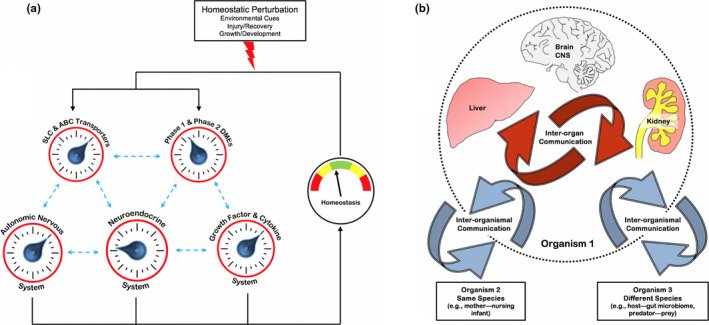Figure 2.

Remote sensing and signaling via ABC and SLC drug transporters and phase I and phase II drug metabolizing enzymes (DMEs). (a) Schematic representation of how SLC and ABC “multispecific drug” transporters and DMEs (expressed in many tissues) (b) are linked to form a small molecule communication system. A "remote sensing and signaling network" (RSSN)—consisting of multispecific transporters and DMEs functioning together with oligospecific and monospecific counterparts as well as regulatory proteins—helps modulate levels of many thousands of metabolites in tissues and fluids throughout the body. 19 This remote sensing and signaling system works in parallel with other regulatory systems to maintain homeostasis and has a complex organization and emergent properties, particularly after perturbation. (b) “Drug” transporters consist of SLC and ABC transporters expressed in all epithelial, as well as many nonepithelial, tissues throughout the body. The remote sensing and signaling theory not only emphasizes interorgan communication (red arrows) but also interorganismal communication (blue arrows), such as the movement of small molecules across the intestine (host‐gut microbiome), and/or into breast milk (mother—nursing infant), or across the placental barrier (mother–baby). CNS, central nervous system (adapted from reference 16). [Colour figure can be viewed at wileyonlinelibrary.com]
